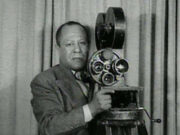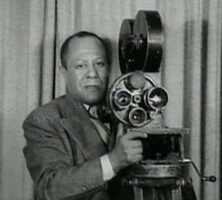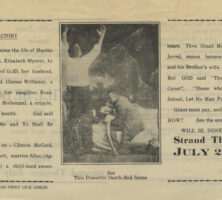J. Richardson Jones was an actor, a cinematographer, and a journalist for the Atlanta Daily World, the largest circulating Black southern newspaper during the first half of the twentieth century.
Jones’s radio broadcasts, stage productions, race movies, and wartime newsreels celebrated African American life along Atlanta’s Sweet Auburn Avenue. Working in the Jim Crow era, he also attempted to undermine segregation through his work by presenting Black citizens as patriotic, industrious, and cultured. Further, his reportage of lynchings exposed Georgia’s racial injustices to national audiences.
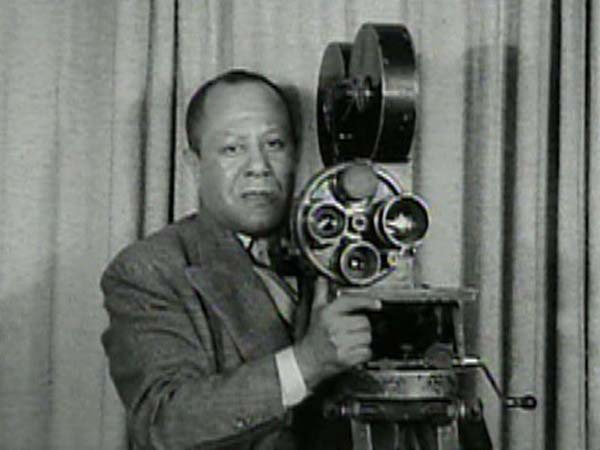
Joseph Richardson Jones was born in Atlanta, probably in February 1901, to Elizabeth Jackson and William C. Jones. Much of his childhood was spent in Jacksonville, Florida, and he had four siblings: Camilla, Louise, Richard, and William. When he was about nineteen Jones began acting in and producing vaudeville shows in the South. From 1935 to 1940 he wrote, directed, and acted in all-Black skits that were broadcast nationally from Chicago, Illinois, including the programs Southland Echoes, Welcome Valley, and Life of Uncle Ned. (“Uncle Ned” was a stock character based on the stereotype of an older Black man who was deferential to whites and nostalgic for slavery.) Ten years later he played Uncle Remus, the fictional narrator of Joel Chandler Harris’s well-known trickster tales, for Rich’s Department Store’s Radio School on WGST in Atlanta. He gained on-air acting experience when such work was hard to find, even in the North, but did so at the expense of pandering to racist attitudes. Like earlier African American entertainers, such as blackface minstrels Bert Williams and George Walker, Jones struggled to humanize such roles.
Films during Peace and Wartime
By 1937, in addition to acting in radio sketches, Jones was writing and taking photographs for the Black-owned Atlanta Daily World. He also composed and directed such dignified depictions of African American culture as the stage play Trampin’ (1938), which uses songs and spirituals to trace the history of African Americans; gave dramatic readings and recitals; and hosted fashion shows, talent contests, and charity fund-raisers. He also became the director of public relations for the Atlanta Life Insurance Company, the nation’s largest (by dollar amount in policies) Black-owned insurer.
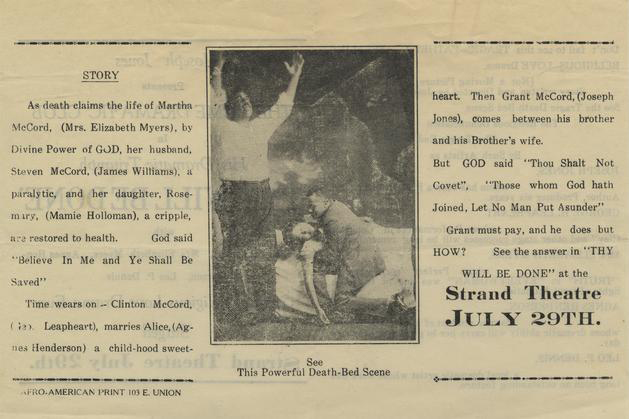
On February 26, 1939, Jones premiered a thirty-minute newsreel, Parade of Progress of Colored Atlanta, at the all-Black Bailey’s Royal Theatre on Auburn Avenue. The film was created at the request of Atlanta Life’s executive secretary Eugene M. Martin as an advertisement for the company. Shots of Atlanta’s historically Black colleges, as well as of employed, sophisticated African Americans, depicted an all-Black paradise with no evidence of Jim Crow that, by excluding images of rural or poor Black southerners, reinforced an elitist view of African Americans. Sponsored by the Atlanta Negro Chamber of Commerce, Jones expanded this highly successful short film into a two-hour Technicolor version, which was screened in 1941-42 at all-Black theaters in numerous cities. His correspondence with Martin’s brother-in-law Walter White, executive secretary of the National Association for the Advancement of Colored People, indicates that these newsreels contributed to the national civil rights campaign against racial stereotyping and racist hiring practices at Hollywood’s major film studios.
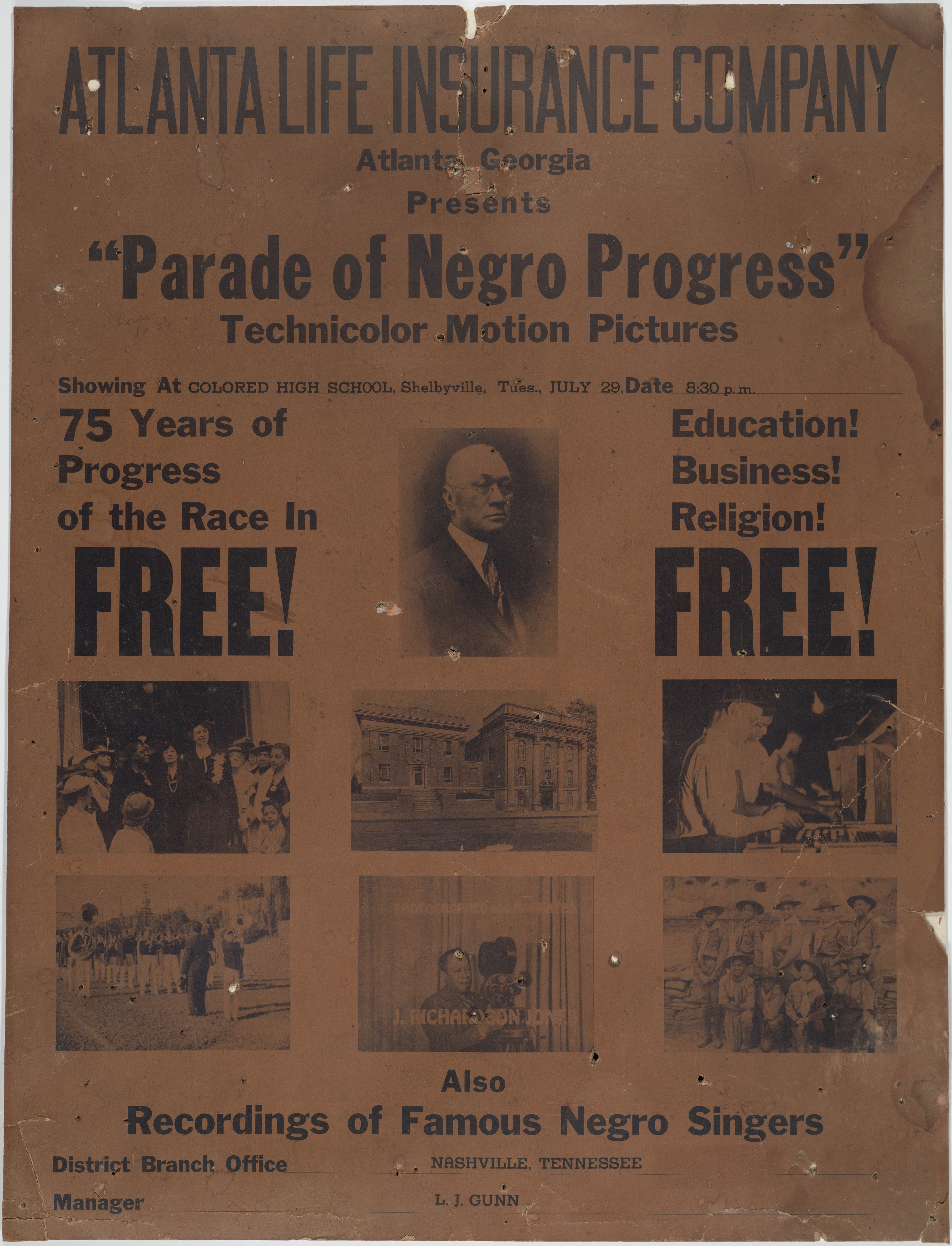
When the country entered World War II (1941-45), the Pittsburgh Courier led the African American press in the Double V campaign, an effort to fight fascism abroad and racism at home. To combat domestic racial prejudice, Jones filmed Black soldiers and trainees in Fighting Americans (1943), Sgt. Joe Louis on Tour (1943), and Down to the Sea (1944). These newsreels also attempted to undermine racism by expressing disapproval for the violence and second-class treatment that for decades plagued African American veterans, including Isaac Woodard, who was blinded in 1946 as the result of police brutality in Batesville, South Carolina; Georgia native Jackie Robinson, who integrated professional baseball in 1947; and Lemuel Penn, who in 1964 was murdered by Athens-area members of the Ku Klux Klan.
Civil Rights Reportage
In July 1946 Jones gave a face to the racial violence of the South when he wrote about and photographed the corpses of four African Americans murdered at Moore’s Ford Bridge in Walton County. His images of war veteran George Dorsey and his wife, Mae Murray Dorsey, and of Roger and Dorothy Malcolm reminded the country of the limits of citizenship for African Americans.
In 1947 Loganville police jailed Isaiah Grimes, a disabled Black sharecropper and army veteran, for allegedly burning down two churches and a school in Walton County’s African American community. Jones reported how the officers presented a signed confession from Grimes, even as African Americans, claiming Grimes’s innocence, pointed to heightened Klan activity in the community during the time of the burnings. Jones also investigated the 1947 death of Henry Gilbert, a prominent Black landowner killed in Harris County by a police officer who cited self-defense. Gilbert had been detained for allegedly conspiring with another African American to murder a white man. Weeks after his death, policemen even arrested Gilbert’s wife for his alleged crime.
Jones covered such stories as both a reporter and a member of Atlanta’s Citizens Defense Committee, a group of influential African American men who pressured all-white courts to eliminate police brutality and treat incarcerated Black people justly. His final story in February 1948 for the Daily World was an exclusive interview from an Albany jail with Rosa Lee Ingram and her sons Wallace and Sammie Lee. In spite of contrary evidence, an all-white trial jury in Ellaville had found them guilty of murdering John E. Stratford, a white sharecropper. Jones’s photographs of the family members catalyzed nationwide protests, which ultimately saved them from the death penalty.
Plagued by chronic health problems, Jones had traveled to Albany against his doctor’s advice. With a weak body taxed beyond repair, he returned to Atlanta and died suddenly of heart failure on February 9, 1948. Family and friends mourned his death and celebrated his life at Big Bethel African Methodist Episcopal Church, his Auburn Avenue church home. William B. Hartsfield, Atlanta’s longtime mayor, lauded Jones as a good colleague and citizen, and hundreds attended his memorial, which was officiated by, among others, William Holmes Borders and Martin Luther King Sr., the father of civil rights leader Martin Luther King Jr.
Jones was dubbed the “Atom Bomb” of Auburn Avenue. Yet scholars have largely forgotten the civil rights contributions of this “human dynamo,” as the Daily World remembered him. The multitalented Jones demonstrated how the collaborative, transregional strategies of African American media, film, theater, and literary arts could be used as strategies against Jim Crow. He also proved that local activism could shape a national civil rights agenda. I. P. Reynolds, the Daily World’s social columnist and Jones’s former business partner, implored readers to honor his friend’s death by continuing his activism.
Had Jones, who started in radio, lived another year, he would have witnessed one positive outcome of the civil rights struggle. In 1949 Jesse B. Blayton Sr. launched Atlanta’s WERD, the nation’s first Black-owned radio station.


